For many Garmin users who want a bit more ‘smart’ in their smartwatch, this is the Apple Watch many will have been waiting for. Larger, longer-lasting and more rugged than any other timepiece from Apple in the past, this is designed to be the device for the active user over the Apple Watch 8.
It’s coming at a much higher price, as a result – but if you’re looking to get all the benefits of a watch that can truly communicate with your iPhone but actually helps you achieve your fitness goals, then this could well be the one to go for.
Then again, there’s a reason brands like Garmin are dominating the ‘premium’ smartwatch market, where the fitness and health-monitoring features are so much more advanced… can Apple really catch up and how does it feel to wear this thing?
Apple Watch Ultra price and release date
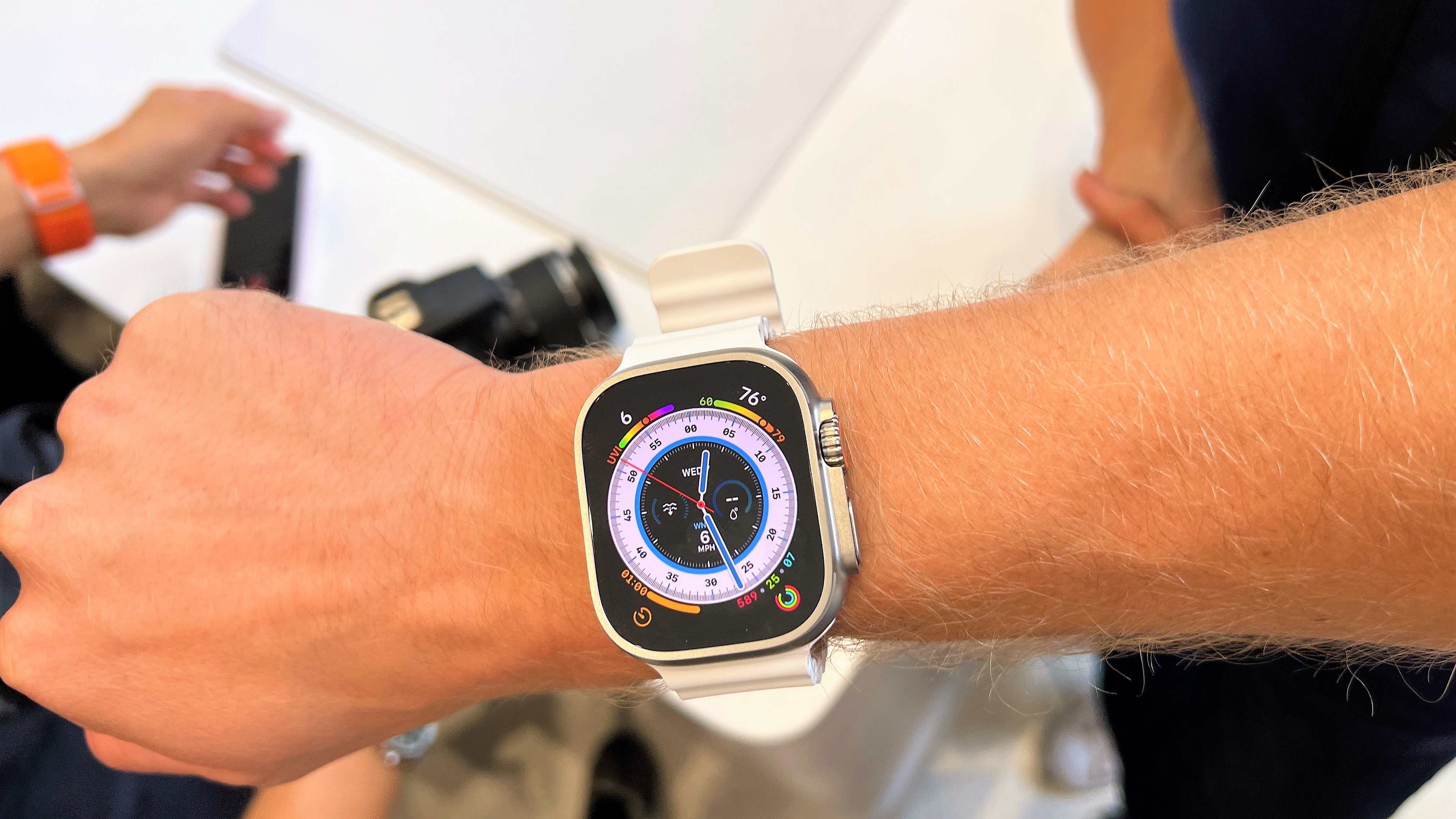
If you’re thinking that this is going to be the watch that will cheaply slip into your life and give you a whole new lease of fitness… well, you’re halfway wrong.
The Apple Watch Ultra is not cheap, coming in at $799 for the 49mm version… but then again, it’s not as expensive as some might have expected with rumors of something well over $1,000 in the ether.
At least we’ve got some better news when it comes to when you can get your hands on it: the Apple Watch Ultra release date is set for Friday September 23, with pre-orders opening already.
Apple Watch Ultra design
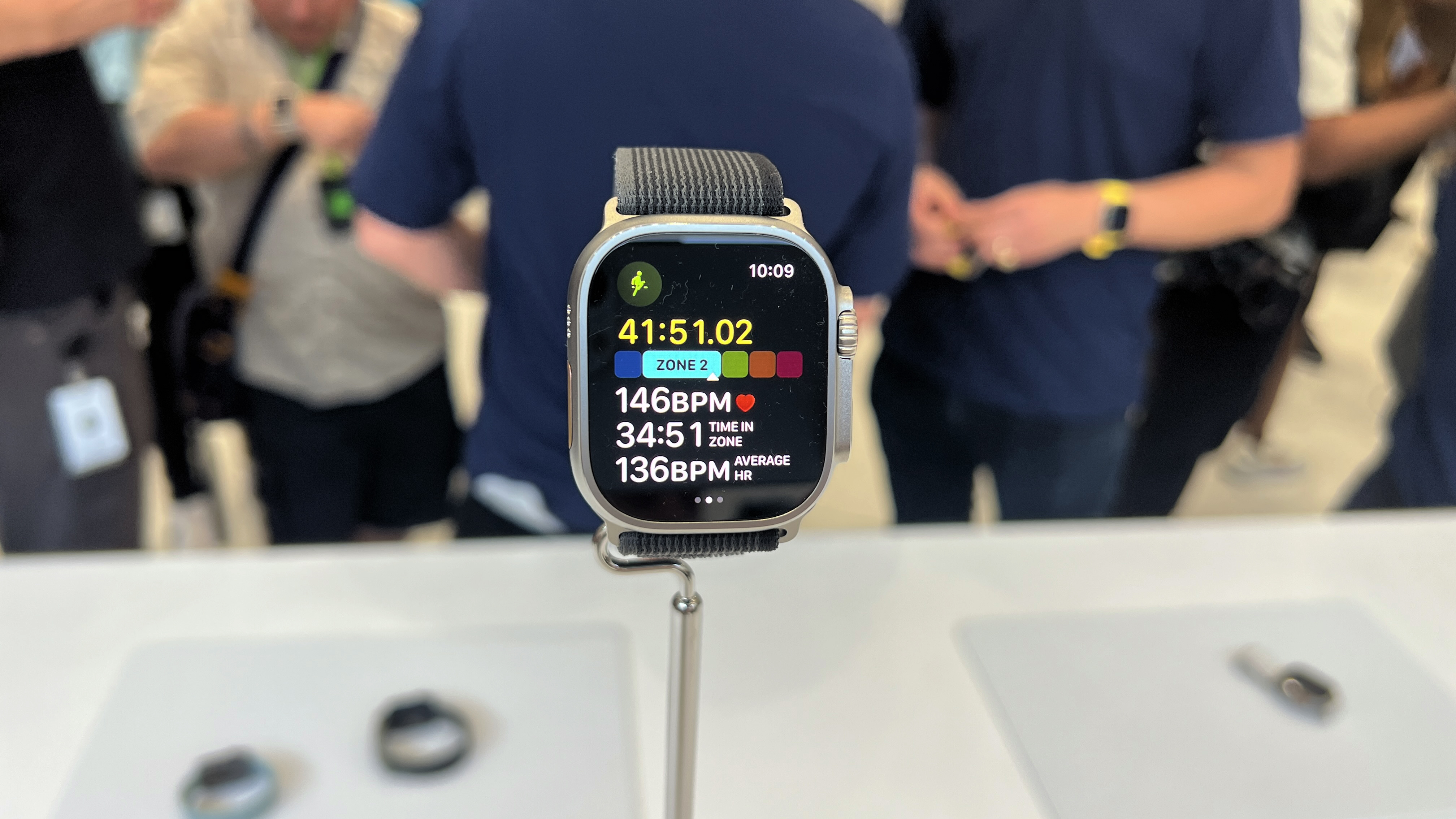
The first thing you might think when picking up the Apple Watch Ultra is that it’s a bit… big compared to the smooth lines of the Watch 8. We expected it to be an ugly device, but the way the metal moulds around the outside of the device, even the big bulge on the right-hand side isn’t that unsightly.
The bulge on the right is something that’s going to mean you’ll really need to want this watch, given you’re already spending $400 more on it compared to the new Watch 8.
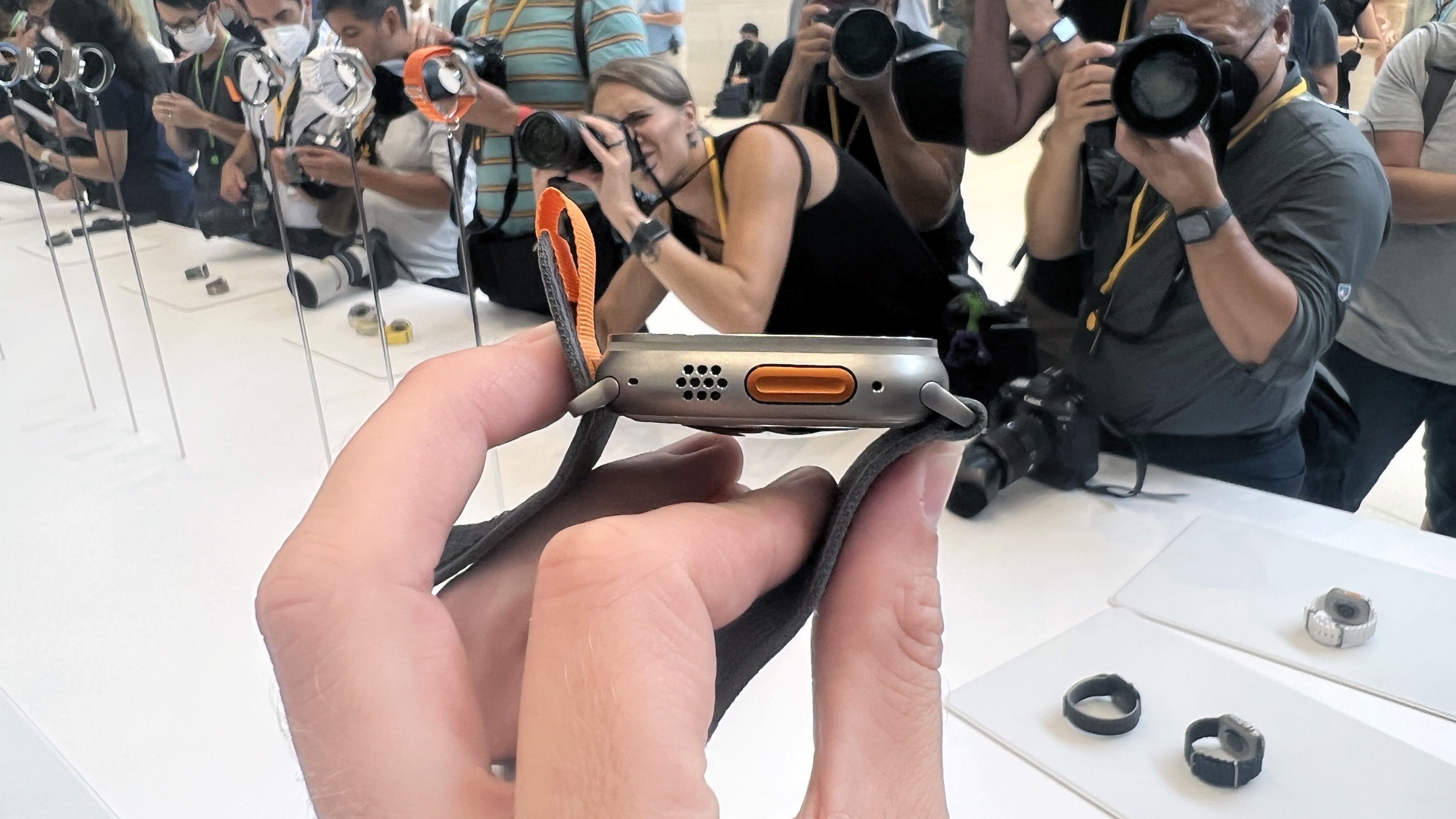
On the left-hand side of the wrist-based device is a new button though – and this is where one of the novel additions resides. Apple has added a programmable button, called the Action button, that will allow you to set which apps will open when pressed, making it super simple to just get the Workouts app open and start running or cycling, open a stopwatch or torch, or get diving.
Sadly, there’s not a huge amount of functions you can currently ascribe to this button, but it’s easily pressable and can also be used to stop and start runs.
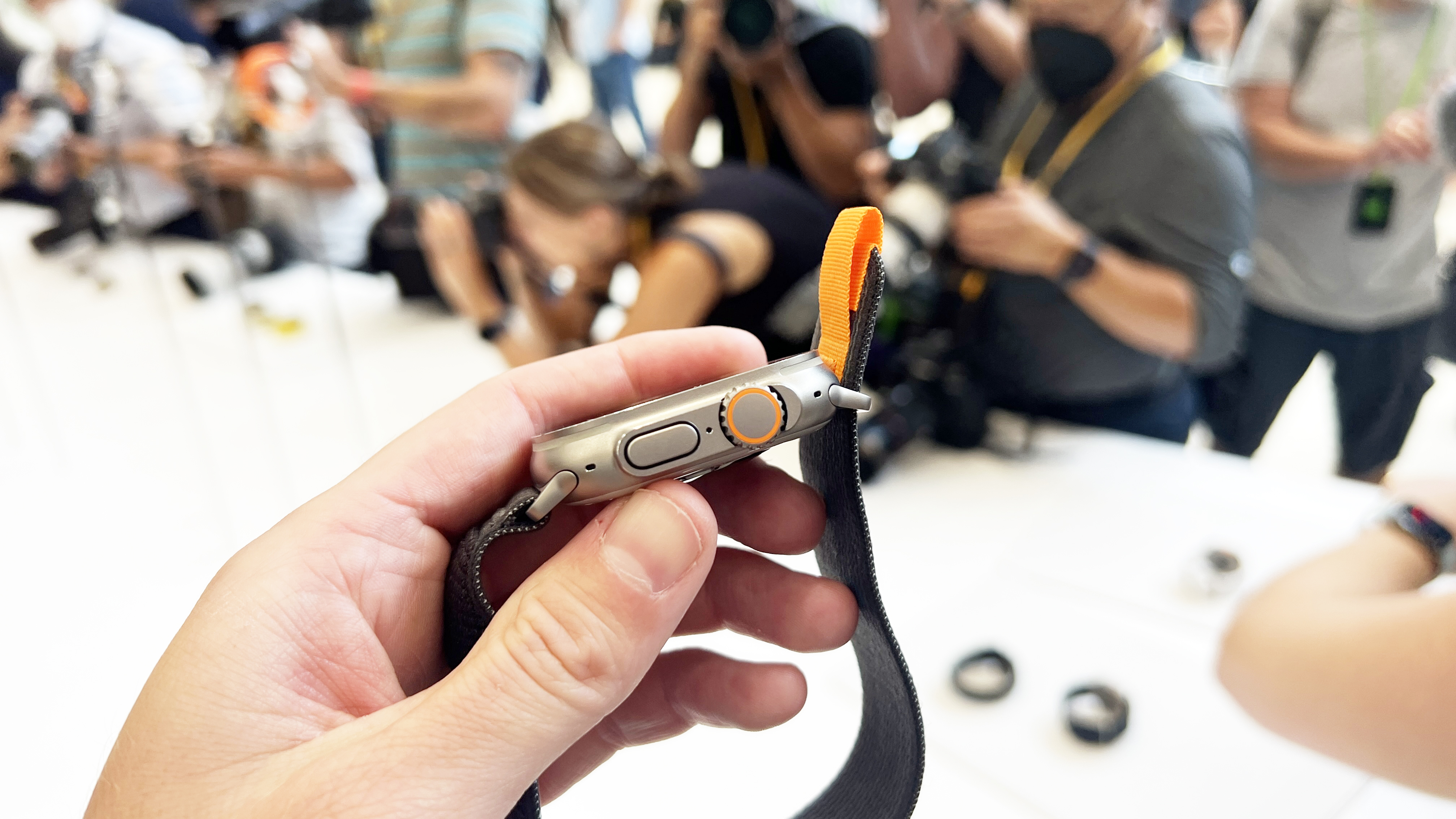
Pressing all of these buttons – the digital crown and power button on the right, just as you might find on a ‘normal’ Apple Watch, and the new button – is a very smooth and tactile experience, allowing you to quickly start and stop activities on the go without needing to fiddle about with double-pressing anything (as you do on the normal Apple Watch) just to confirm you’ve finished a run.
On the wrist, the Apple Watch Ultra certainly feels larger than most other timepieces – the 49mm model has a huge 2-inch screen (although it won’t feel that large if you’re someone that’s a fan of the larger running watch, like the Garmin Fenix series).

If you’re coming from the smaller Apple Watch, we’re pretty sure you’ll feel the difference – but equally that heft makes it feel a lot easier to swallow that high price point too.
On the rear of the Apple Watch Ultra is a similar-looking heart rate monitor, allowing you to track your pulse on the go while running, cycling, swimming or more.
Apple has created a whole suite of new bands to buy with the Watch Ultra – all with being more active in mind. The Trail Loop is lightweight and easy to attach to the wrist, the Alpine Loop features a titanium hook (that we found incredibly hard to get to the right size without needing a third hand) and the Ocean Band, which is an incredibly strong strap that will hold onto your wrist, even in high-intensity watersports.

Three microphone points are designed to beam-form to your voice, meaning you can be heard in more hostile conditions, and the speakers have also been upgraded so you’ll be able to hold a conversation when stuck up a windy mountain. It’ll also act as a very loud siren and we can’t tell you how tempted we were to press it in the crowded press room.
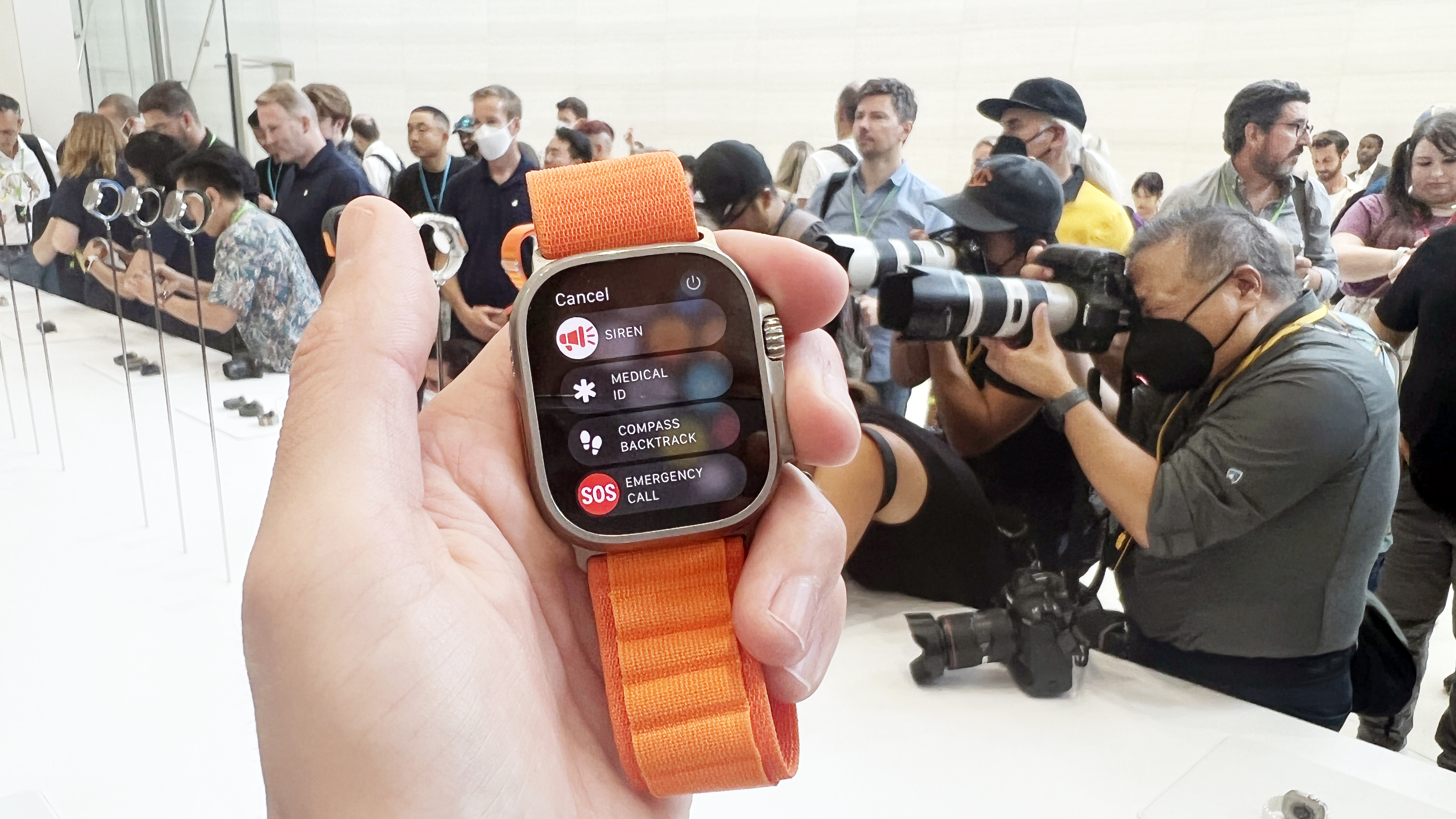
But we didn’t.
We really expected the Watch Ultra to be a large, chunky and ugly design, and while it’s heavy on the wrist it’s not as bad as it could have been. The larger Digital Crown, with enhanced grooves, the more-pressable buttons and bigger and more dynamic screen are all pleasant to use and are definitely something we can see being easier to press with wet or glove-covered fingers.
Apple Watch Ultra screen
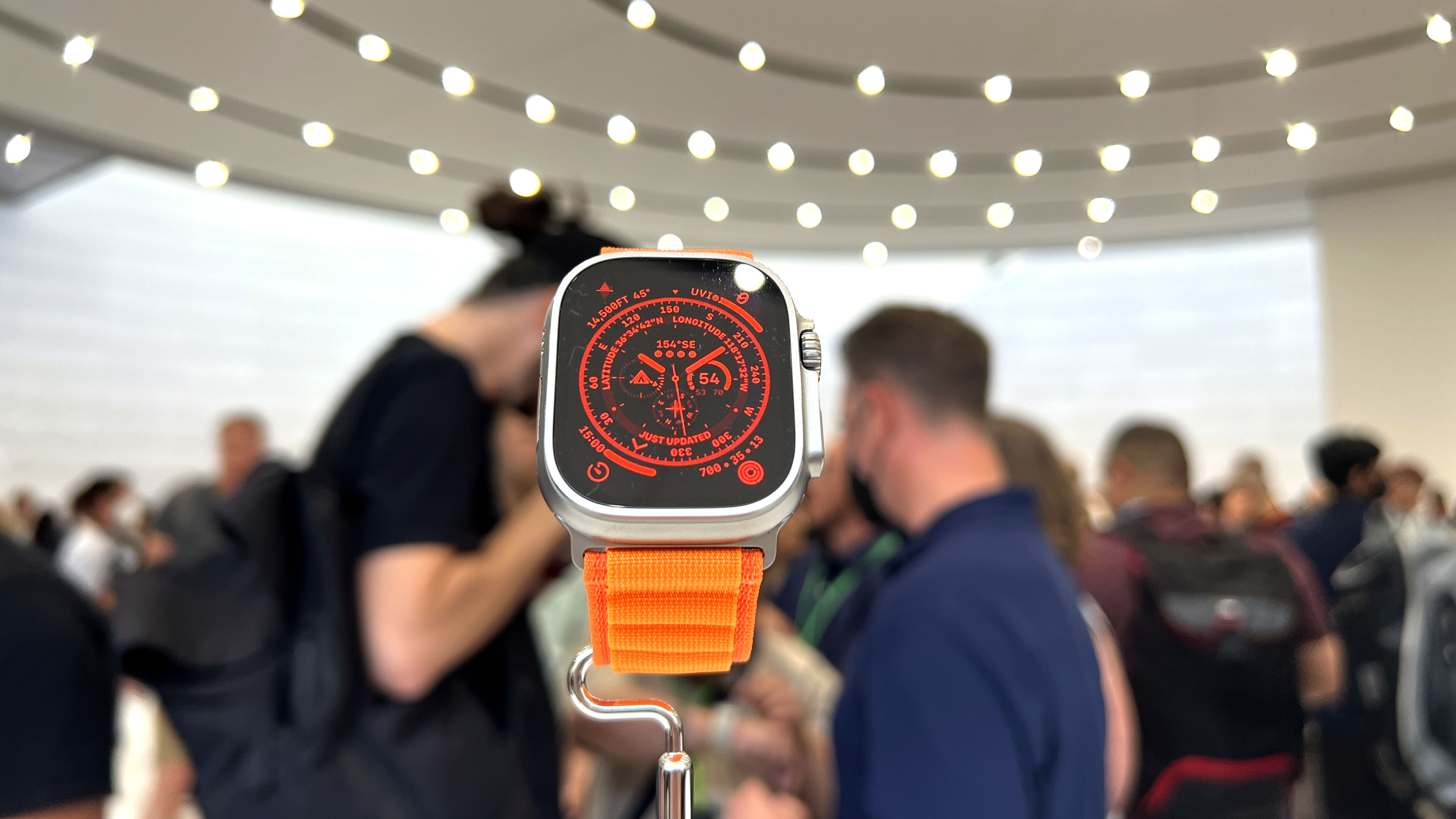
Like the Apple Watch 8, the Watch Ultra uses an OLED screen, with the same low refresh rate that means it can carry the always-on display without draining the battery heavily.
It’s also been enhanced to have a higher peak brightness of 2000 nits, allowing you to see what you’re doing in bright sunlight and if you need to flick your eyes at your wrist when performing some fun intervals or trying to run really, really fast up a hill.
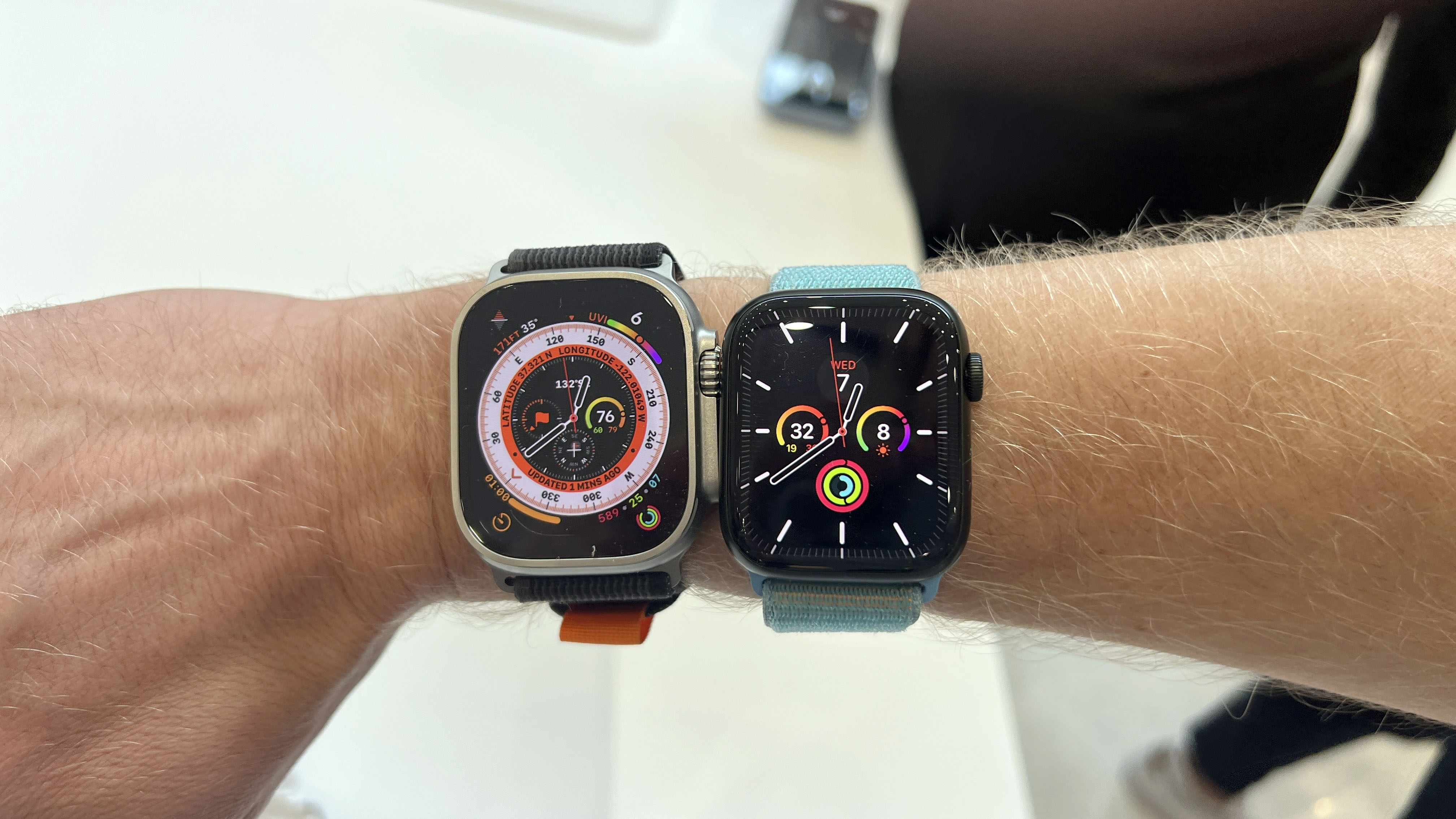
It’s also covered in sapphire and raised from the screen to stop it scratching easier – again, this is the kind of thing that’s increasing the price of the Watch Ultra, making it more robust but adding a lot more to the cost.
The Watch Ultra display is the sharpest in any Apple Watch – that richer display means it’s easier to follow instructions or read data on the go without needing to peer too closely. It’s not massive though, and the big difference is the brightness on the screen – the peak brightness is something that will almost certainly appear clear in even the brightest conditions.
Fitness
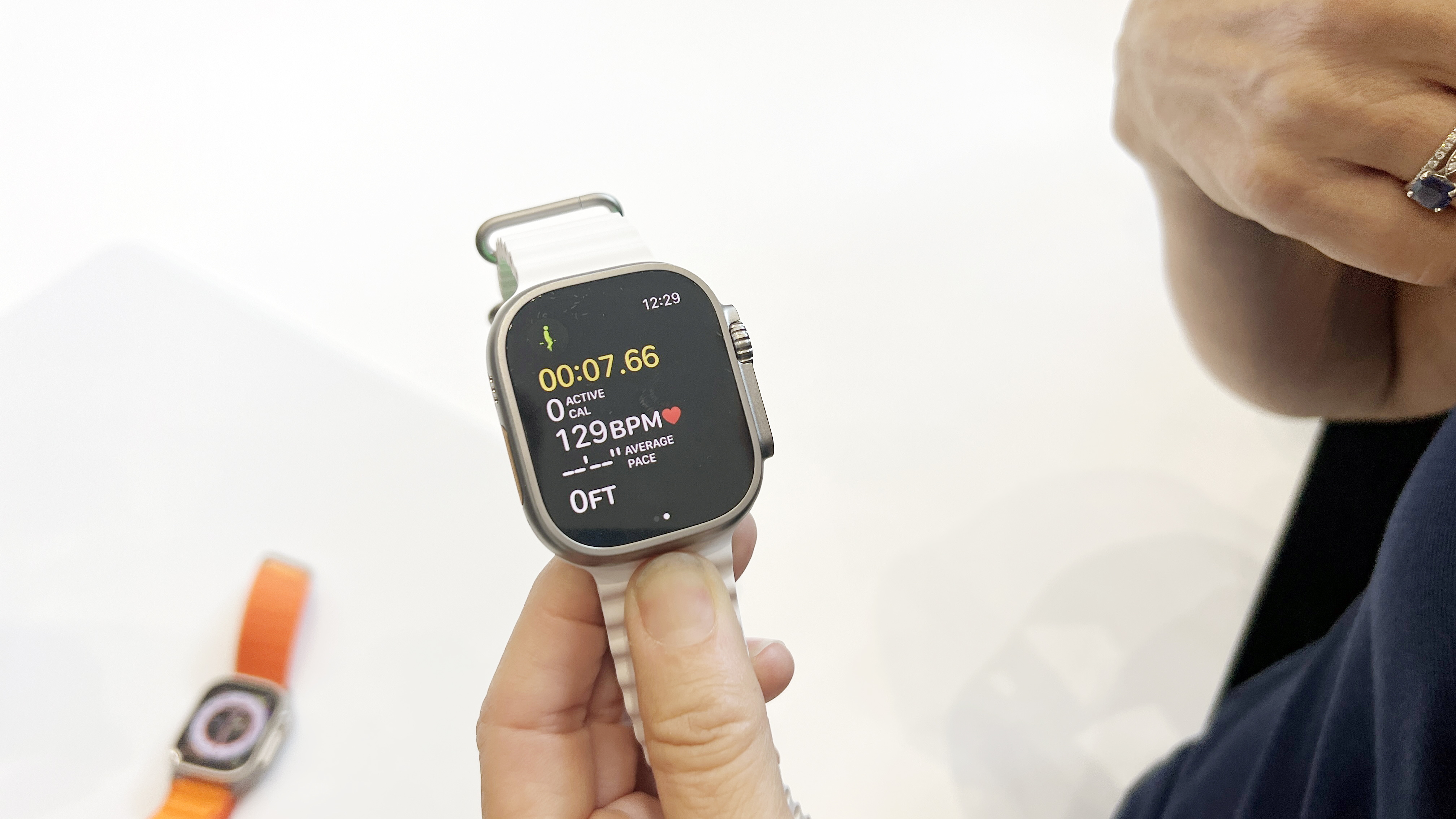
Well, let’s get onto the good stuff, shall we? The Watch Ultra is designed to be attractive to those that love to get out and enjoy what their body can do when it’s pushed, and to achieve that Apple’s added in a few new smart features.
Obviously, in our limited time with the new Watch Ultra we didn’t get the chance to go and bash out a quick 10k, so these are currently theoretical – but there are some enhancements over the base Apple Watch that will appeal to the fitness enthusiasts.
The biggest one seemed to be around diving, with an automatic diving detection that allows you to instantly see your depth while you’re floating around in the deep. We’ll be honest, this bit went a little over our heads, but the new depth gauge is certified to EN 13319, which means it’s a legit gauge.
The Watch Ultra is also certified to WR100, so for everyone who isn’t a dedicated diver, you’re going to be fine with this one, even if you fall off a boat and forget to swim for a bit.
There’s also a new Oceanic+ app coming later in the year that will allow you to see all manner of top diving metrics – you can see more on those over at Apple’s official site (opens in new tab).
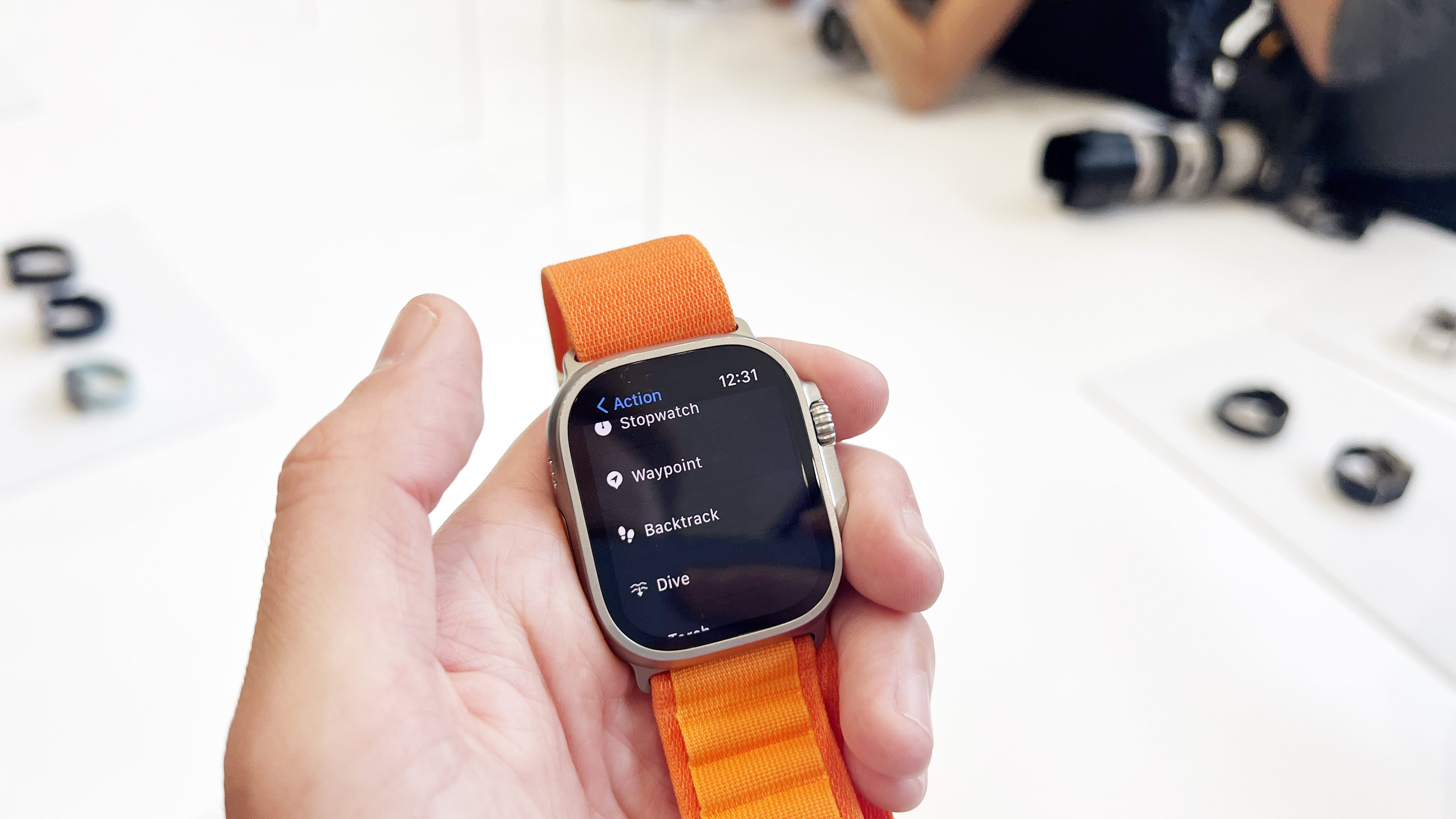
What is curious about the Watch Ultra is that, well, it’s not that good for running. Well, that’s not fair – it’s great to have the new metrics in the shape of running power, interval training, heart rate zones etc, but these all came with watchOS 9 so are available on a number of Apple Watch models.
The Watch Ultra does have the most GPS bands of any Apple Watch, with a new frequency being added (L5) to make it easier to get a lock in cities with high buildings, and using computational data to assess where you might be (ie, working out that you’re probably not running through a building).
Whether you’ll be able to see the GPS lock on the Watch Ultra is another thing though, as Apple traditionally doesn’t do this.
There is BackTrack on board, where you can set your own waypoints and then use the compass to retrace your steps, but it looks a very fiddly system and we can’t understand why Apple – which has its own Maps app, don’t forget – hasn’t got offline mapping added into this watch, with auto-running routes or similar.
When it comes to fitness, the Watch Ultra seems more geared towards being robust than it does being ace for all manner of sport tracking.
Apple Watch Ultra battery
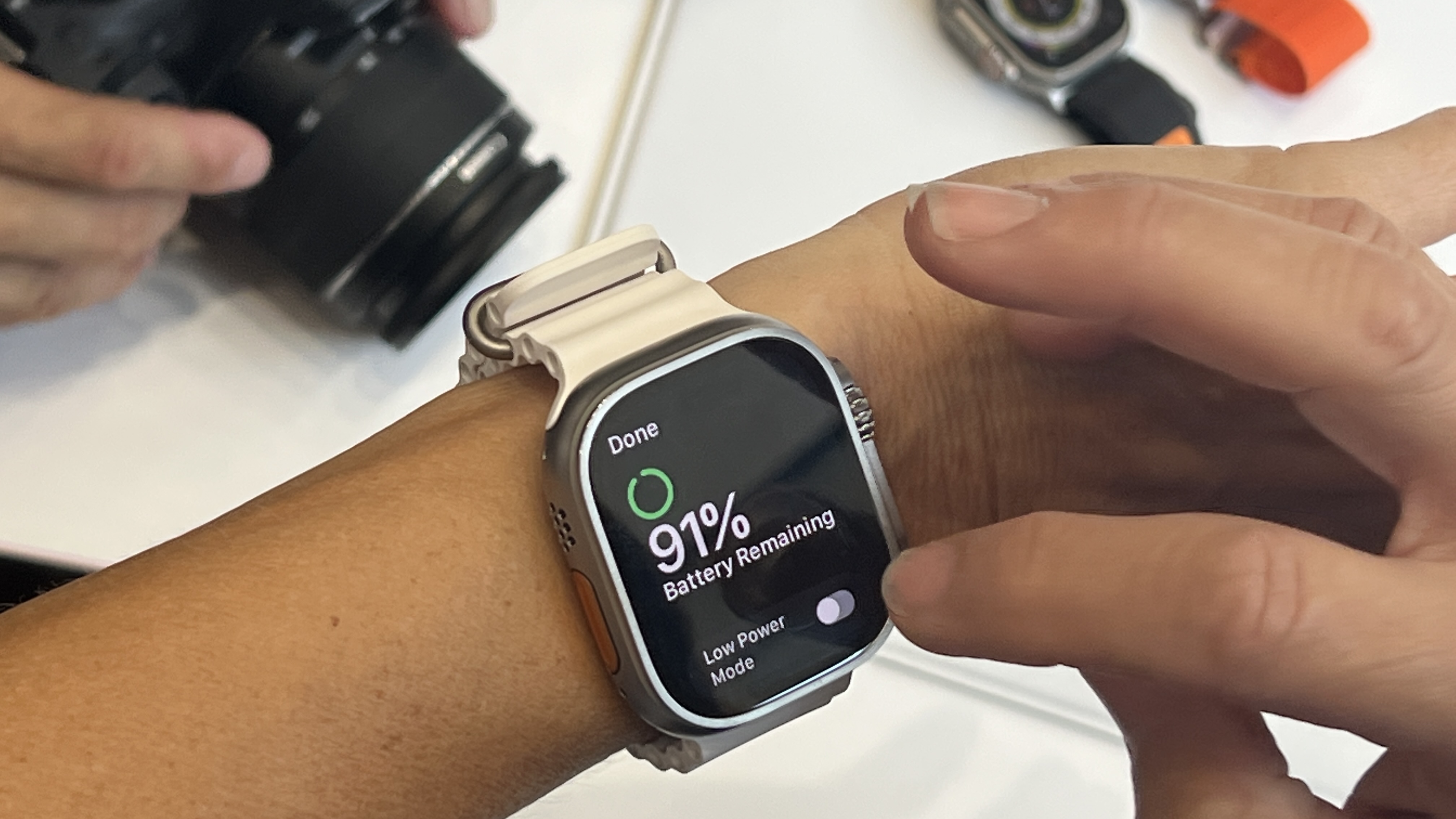
The battery life on the Watch Ultra finally – after eight years of new devices – crashes past the 18-hour mark (according to Apple, as we’ve always found it to actually last a bit longer than that) and should last 36 hours before needing a charge.
That extra capacity partly comes from the new S8 chip inside, but mostly comes from the extra thickness of the device that definitely looks and feels chunkier on the wrist.
In terms of how quickly you can charge the Watch Ultra, it’s not much different to the Watch 8, which uses the same fast-charger from last year’s Watch 7.
Which then ruins your sleep tracking – and if you’re like us, you hate the idea of having to not get your data each day. Best keep a charger by a laptop or sofa so you can charge the Watch Ultra up in some down time.
Sure you’ll be able to wear this for a night or two in bed, especially if the new 60-hour mode that’s coming later in the year (which will take fewer readings from GPS and heart rate etc) comes in, but that’s still not enough to be consistent at sleep tracking – and many people will struggle to wear a watch this big in bed.
Early verdict
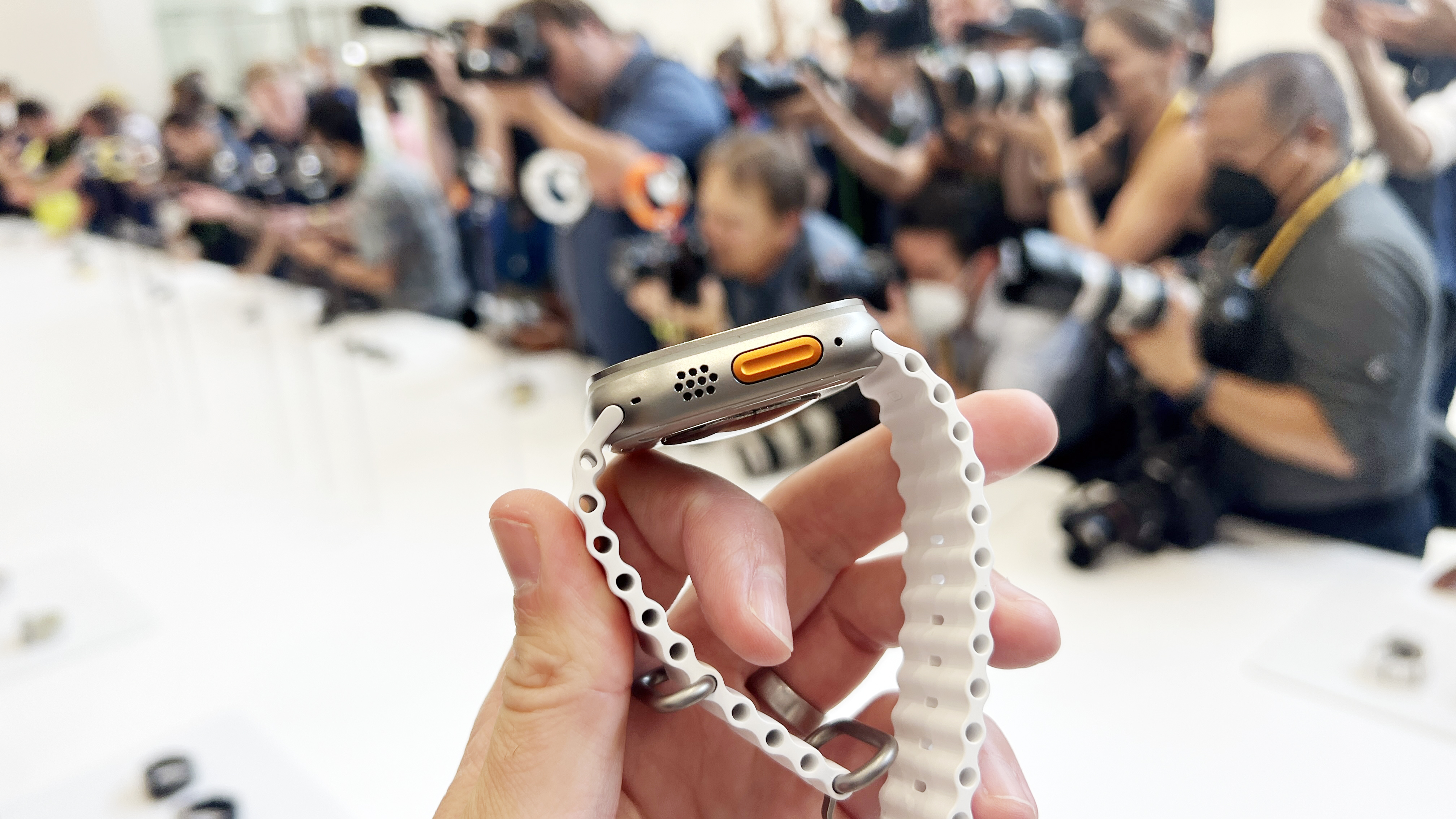
The Apple Watch Ultra is something we’ve been demanding since day one: a proper fitness tracking device from Apple, and that’s definitely what we’ve got.
However, the overall feeling – much like with the Samsung Galaxy Watch 5 Pro – that this isn’t a good enough suite of fitness facilities to rival the immense power of the more dedicated running watches.
But that doesn’t really feel like the market Apple’s going after – it doesn’t need a Garmin rival because the hardcore ultra runners are still going to gravitate towards high-end equipment.
The Watch Ultra is designed to extend the appeal of Apple’s timepiece to more users, those that are more serious about their fitness but not getting up at 4:30AM to do precisely 14 x 400m intervals at zone 4 heart rate.
However, if you want a watch that will offer some cellular connectivity – and all the models will – in inhospitable conditions, that will monitor your health or let you quickly call the emergency services, then that’s where it excels. It’s the watch for those that want power on the wrist but still like the idea that it’s a small iPhone too.
We’re looking forward to taking this out into the real world and seeing how it performs – where might it offer the greatest advantage?




